Lemon Nettle Tart, an Easy and Delicious Stinging Nettle Recipe

This delicious lemon nettle tart uses just four ingredients for the filling. Inexpensive and straightforward, I think it is my most original stinging nettle recipe to date. Serve chilled, decorated with edible wildflowers for an elegant spring dessert that will wow your guests.
You don’t see many stinging nettle dessert recipes, but nettles work well in sweet dishes. The nettles and lemon pair particularly well in this tart, resulting in a beautiful soft green colour and a sweet, floral filling.
Once cooled and chilled, the lemon nettle tart has a texture similar to cheesecake but in a crisp pastry shell. – I’m not sure anyone would guess it is made from nettles if they hadn’t tried them in a sweet recipe before.
How to identify stinging nettle (Urtica dioica)
Stinging nettles have green leaves with serrated edges, found in opposing pairs along the upper half of their stalks. Their stems and leaves both have a covering of tiny hairs, which is how the plant stings. The hairs are small tubes that act as a needle to inject a mixture of formic acid, histamine and other chemicals into your skin as a defence mechanism. Anyone stung by a nettle knows just how effective a deterrent their sting is.
Here in the UK, we also have a group of similar-looking plants known as dead nettles (Lamium family). Dead nettles have serrated leaves, similar to stinging nettles, but with a smoother appearance and colourful white, red or yellow flowers. Dead nettles do not sting when touched and are also edible.
Where do stinging nettles grow?
Nettles grow across much of the world and are one of the most abundant wild foods in the UK, as demonstrated perfectly by the photo below. Imagine being stuck in the middle of that!
A prevalent plant, the stinging nettle can grow in gardens, hedgerows, fields, woodlands and many other habitats. Its preference for damp, fertile and disturbed ground makes it a good coloniser of places enriched by human activities, such as agriculture and development.
Stinging nettle health benefits
Nettles have a long history of use in the home as a herbal remedy and nutritious addition to the diet. Archaeological evidence in the UK shows that we have been eating the plant since prehistoric times, with ‘Nettle Pudding’ laying claim to being Britain’s oldest recipe.
Stinging nettles are incredibly nutritious. High in Vitamin C and Vitamin A and full of calcium, magnesium, iron, and potassium, they are also a good source of protein. Tea made from the leaves has traditionally been used as a cleansing tonic and blood purifier, and the plant is often used to treat hay fever, arthritis, and anaemia.
Many health claims of nettles are anecdotal, but some robust research also backs up some of their suggested benefits.
Nettles are traditionally used as a treatment for chapped skin, eczema and acne and are believed to reduce scarring caused by acne and chicken pox. They also make a fabulous tonic for hair and are supposed to help promote hair growth in chronic hair loss.
Stinging nettles are also great wildlife attractors: caterpillars of the small tortoiseshell and peacock butterflies use them as food plants; ladybirds feast on the aphids that shelter among them; and seed-eating birds enjoy their autumn spoils.
Harvesting stinging nettles
To avoid being stung, I recommend wearing gloves when collecting stinging nettles. Alternatively, snip them straight into your collection container with scissors to avoid handling them.
Stinging nettles are at their best when very tender, so the ideal time to pick them is in the spring when they are young.
Only young nettles or bright green tops of larger plants are good to eat, as old stinging nettle leaves can act as a laxative and contain cystolith crystals that can upset the urinary tract.
The generally accepted wisdom is not to eat nettles when flowering between June and October. The new growth from nettles that grow after being cut back is fine.
How to cook stinging nettles
Blanch leaves for two minutes in boiling water will inactivate their sting before adding them to the stinging nettle recipe, such as the lemon nettle tart below. Like spinach, stinging nettles have an earthy, wholesome flavour and make an excellent substitute for spinach in recipes.
Nettles reduce to about a quarter of their fresh amount when cooked, so a carrier bag full will yield about 500g/1lb when cooked.
What you need to make lemon nettle tart
- One blind-baked sweet pastry crust (homemade or ready-made).
- 50 grams nettle tops (about 60 tops)
- juice of 2 lemons
- Three egg yolks
- 1 397g tin of sweetened condensed milk
- Edible wild flowers to decorate
- You will also need a 20cm tart tin (Amazon Affiliate link)
Note: The basket of nettles shown in the photo above is the quantity of nettles that I put into this lemon nettle tart.
How to make lemon nettle tart
Blanch the nettle tops in boiling water for 2 minutes before draining and allowing to cool. Gently squeeze the excess water out of the nettles.
Place the nettles in a bowl with the lemon juice and blend them into a puree with a stick blender.
Place the condensed milk in a bowl and mix in the three egg yolks, followed by the nettle and lemon puree.
Tip the filling into the prepared pastry case and bake in a moderate oven at 160C for about 25 minutes. Cover the tart with baking parchment if your oven runs hot to avoid the top browning excessively.
Leave the lemon nettle tart to cool, then chill before decorating with edible flowers.
Here is a list of the edible wild flowers I used to decorate my lemon nettle tart.
- Primrose (Primula vulgaris)
- Cowslip (Primula veris)
- Blackthorn blossom (Prunus spinosa)
- Grape hyacinth (Muscari neglectum)
- Ground Ivy (Glechoma hederacea)
- Red dead-nettle (Lamium purpureum)
There are also a few Kale flowers from my veg patch.
Lemon nettle tart is deliciously rich, so it should feed eight comfortably.
All my family think my lemon nettle tart recipe is delicious, but I’d love to hear what you think if you make it. Please comment below if you try it, or tag me on social media. You can find me on The Forage Field Facebook page.
Lemon Nettle Tart, an Easy and Delicious Stinging Nettle Recipe
Recipe details
Ingredients
- One blind-baked pastry crust (homemade or ready-made).
- 50 grams nettle tops (about 60 tops)
- juice of 2 lemons
- Three egg yolks
- 1 397g tin of sweetened condensed milk
- You will also need a 20cm tart tin.
Instructions
- Blanching the nettle tops in boiling water for 2 minutes before draining and gently squeezing the excess water out.
- Place the nettles in a bowl with the lemon juice and blend them into a puree with a stick blender.
- Place the condensed milk in a bowl and mix in the three egg yolks, followed by the nettle and lemon puree.
- Tip the filling into the prepared pastry case and bake in a moderate oven at 160C for about 25 minutes.
- Cover the tart with baking parchment if your oven runs hot to avoid the top browning excessively.
- Leave the lemon nettle tart to cool, then chill before decorating with edible flowers and serving.
Tips
- Cover the tart with baking parchment if your oven runs hot to avoid the top browning excessively.




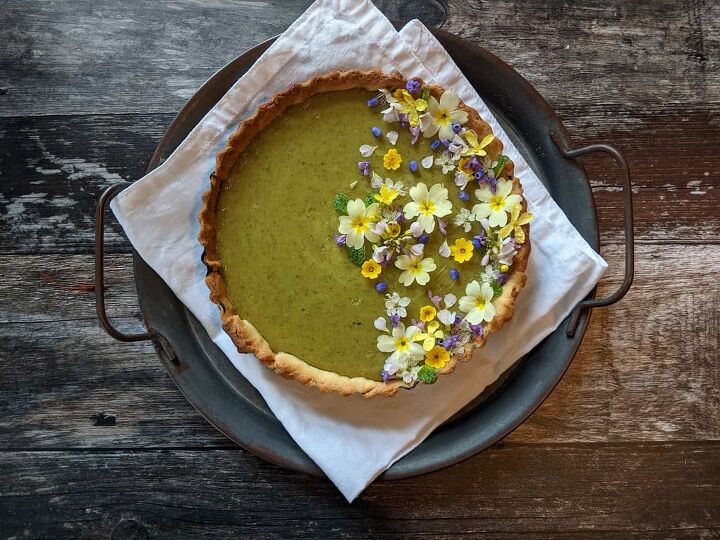











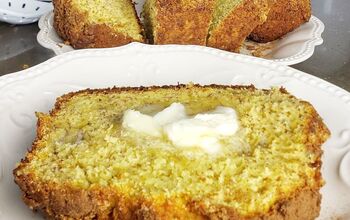

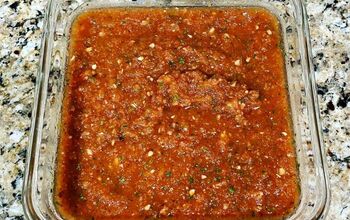
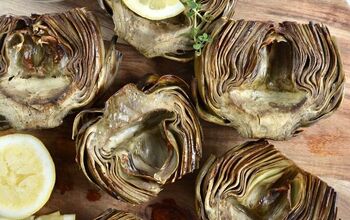



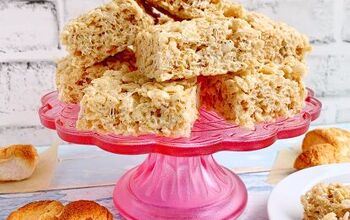
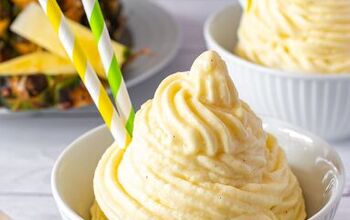

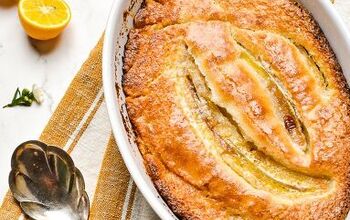
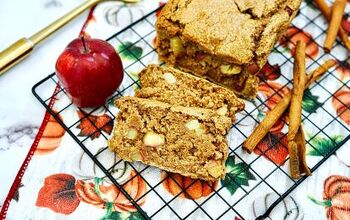




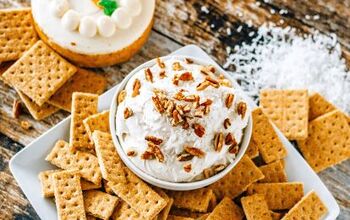
Comments
Share your thoughts, or ask a question!